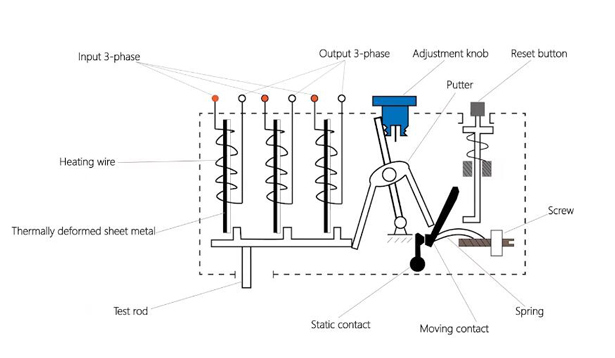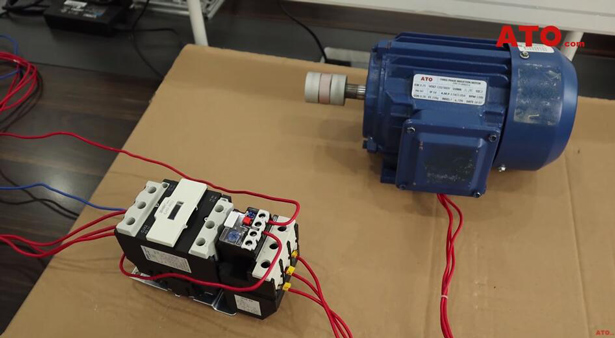What is a Thermal Overload Relay?
Modern industrial automated machinery is powered mostly by motors. The torque generated from a rotating motor provides the driving force for moving conveyor belts, gears, chains and other mechanical components, so a motor naturally becomes such an integral part that is key to the driving system. When it comes to the protection of the core power part, you can't pay too much attention to it.
Thermal overload relays are used to provide overload protection, open-phase protection and protection against the unbalanced current for motors and they can also avoid heating in electrical equipment. The thermal overload relay works by the thermal effect of electric current to push the action mechanism to make or break contacts for the protection of electrical appliances.
A thermal overload relay consists of a thermal element, action mechanism, bimetallic sheets, contacts, a reset button, etc. To use the relay, you need to connect the heating element in series with the main circuit of the motor and let the NC contact in tandem connection with the control circuit of the motor. When the motor is running normally, the heat produced by the thermal element will bend bimetallic sheets but it’s not adequate to trigger the contacts of the relay.

Once the motor is overloaded, the bending degree of the bimetallic sheets increases to push the guide plate to separate the NC contacts. Now that the control circuit of the motor has been cut off, the motor is put under protection against electrical faults.
There is a buckle on the relay to be inserted into the hole on the contactor and take a screwdriver to tighten them up. To further make sure the two devices are securely connected, we will use a multi-meter to test them. Thermal overload relays generally work in tandem with contractors to control the operation of motors. The wiring is not complicated. You need to connect the input terminals of the relay to the output terminals of the contactor. The three-phase power supply is connected to the input of the contactor to power the system on, and the output of the relay is wired to the motor. You can select between NO or NC contacts on the relay to control the coil of the contactor.

Thermal overload relay working steps
Here we’ll use the NC contacts. The hotline is wired to one of the NC contacts. The other contact is wired to the coil of the contactor, and a blue wire goes from the contactor to the power supply to form a circuit.
- Switch on the power and as we use the NC contacts, the whole circuit is closed so that the motor starts running when it’s energized.
- The red button is to stop the relay. Long pressing on it will break the circuit and the motor is de-energized. You can see the motor is slowing down and finally stops.
- However, once the button is released, the circuit will be closed again and the motor will be energized and will be running again. Therefore, it’s a momentary switch, not a latching switch.
Watch the following video for more details. High-quality thermal overload relays with various amperage ranges and special features are available online. Welcome to ATO.com to get the best products at low prices.

